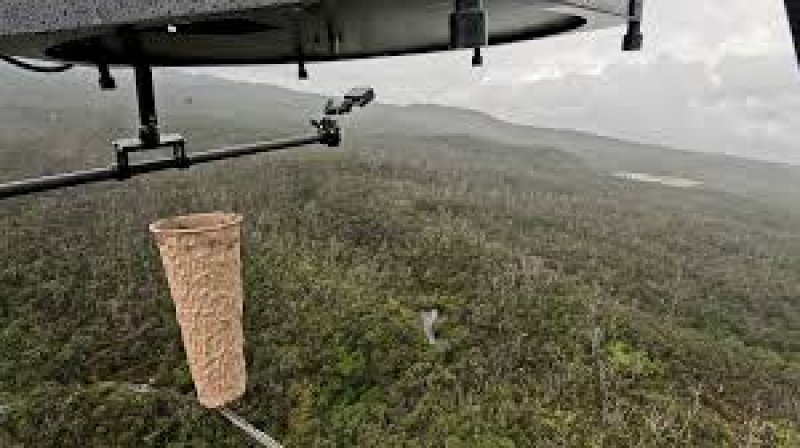
Thousands of mosquitoes are being dropped by drone over islands in Hawaii

These weren’t just any mosquitoes they were non-biting, lab-reared male mosquitoes carrying a common bacterium that results in eggs that don’t hatch when the males mate with wild females.
The hope is that they will help to control the archipelago’s invasive mosquito population, which is decimating native bird populations, such as
The birds, which are key pollinators and seed dispersers and also play a central role in Hawaiian culture, are in dire straits. There were once more than 50 known species of honeycreepers in Hawaii, but today there are only 17 left, most of which are endangered.
Last year, the ‘akikiki, a small gray bird, went functionally extinct in the wild, and less than 100 of the yellow-green ʻakekeʻe are estimated to remain.
Development and deforestation have had an impact, but according to Dr. Chris Farmer, Hawaii program director for the American Bird Conservancy (ABC), the “existential threat” is avian malaria, which is spread by mosquitoes.
The insects are not native to Hawaii, but were first reported in 1826, likely unintentionally carried over by whaling vessels. “They caused waves of extinction,” says Farmer, as many native birds, such as the honeycreepers, had no resistance to the disease.Since mosquitoes thrive in the warmer tropical habitats in the low elevations of Hawaii’s islands, the remaining honeycreepers found a refuge higher up in the mountains of islands such as Maui and Kauai, he explains.
Now, this is changing. “With climate change, we are seeing warmer temperatures and we’re watching the mosquitoes move up the mountains,” he says. “(In places like Kauai) we’re watching the populations of birds there just completely plummet.”
“It’s a constant march of mosquitoes moving up as the temperatures allow them and the birds getting pushed further and further up until there’s no habitat left that they can survive in.
“If we don’t break that cycle, we’re going to lose our honeycreepers,” he adds.
Because mosquitoes are also such a huge threat to human health, spreading human malaria, dengue fever and the zika virus, among others, scientists have been studying the problem for decades, coming up with various solutions, including the incompatible insect technique (IIT).


